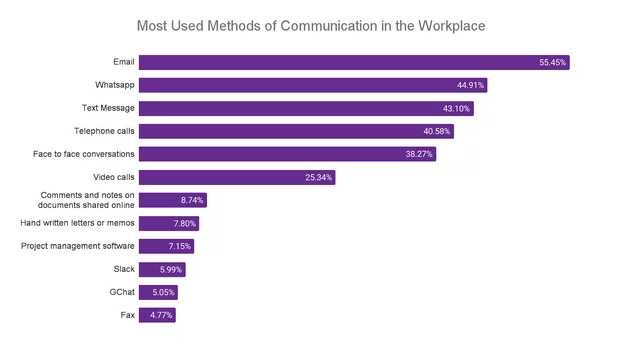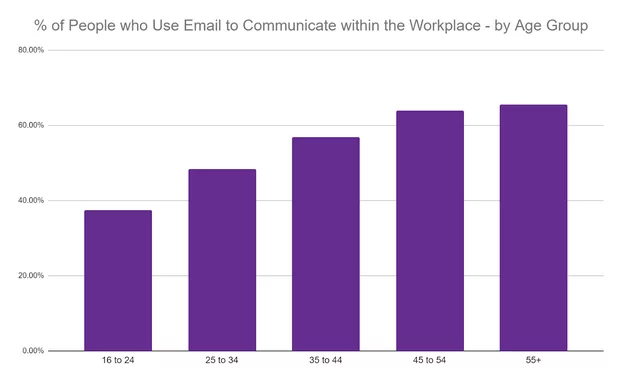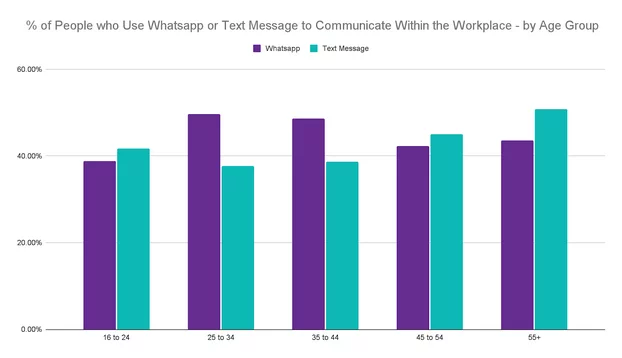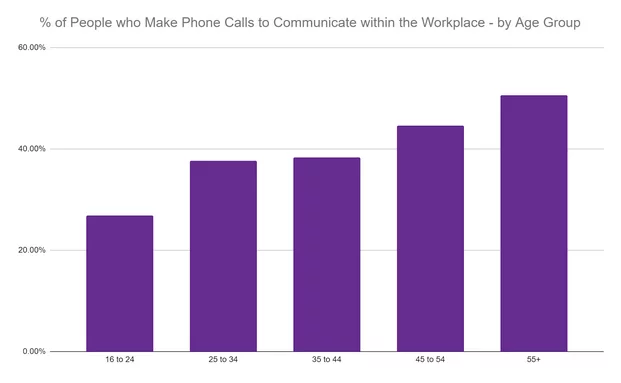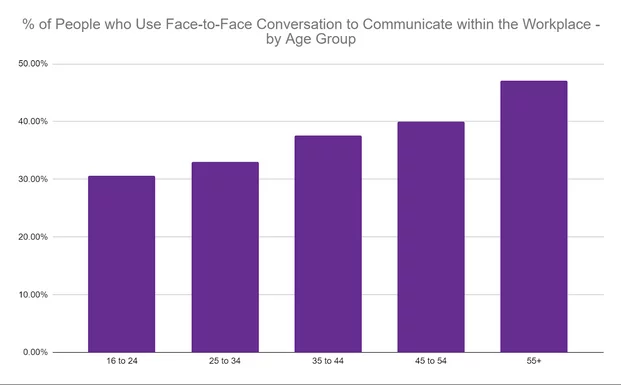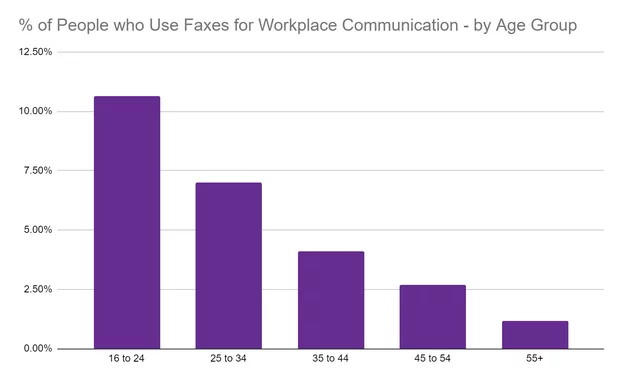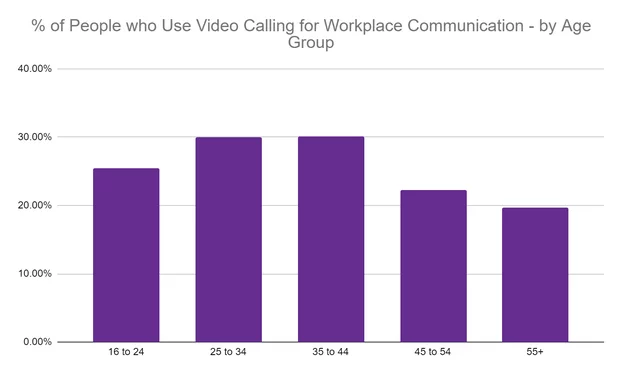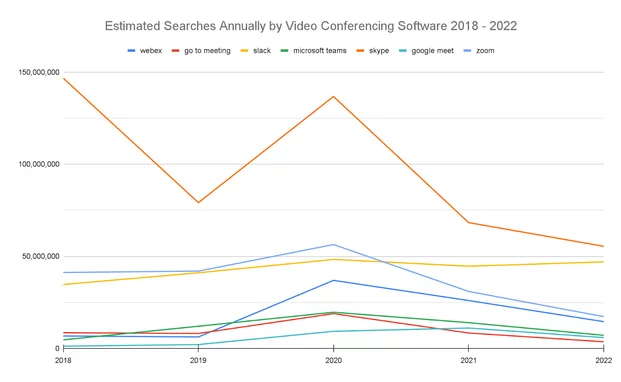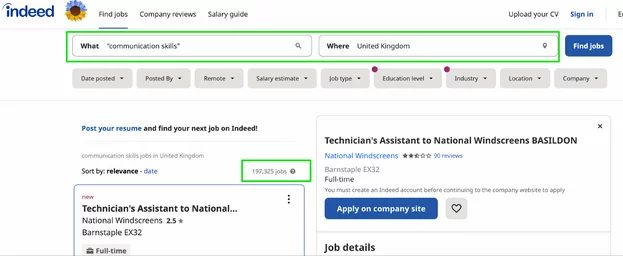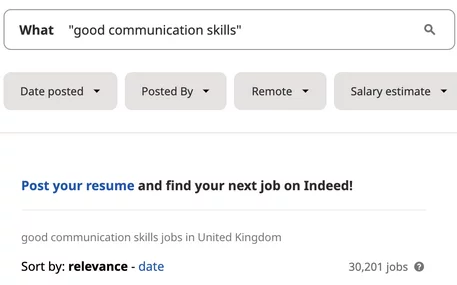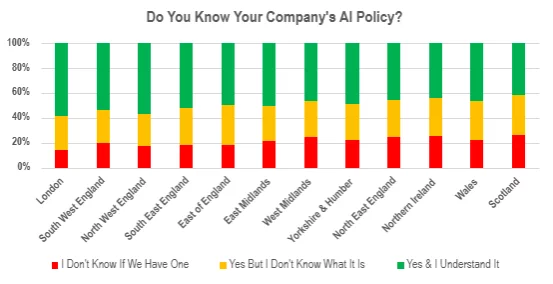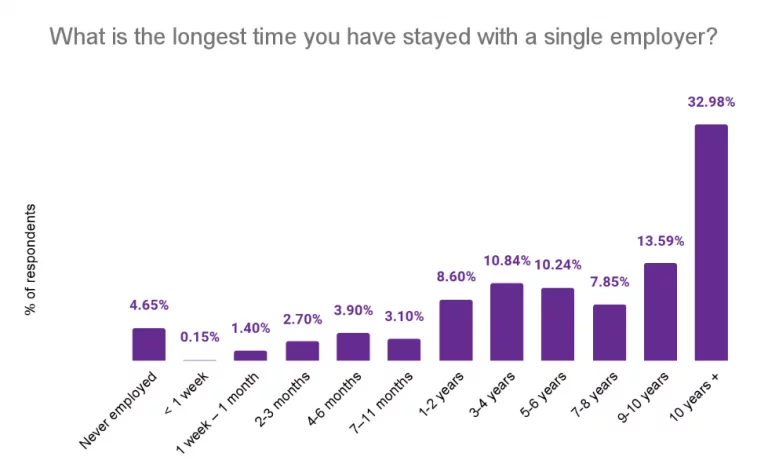
Communication Skills Statistics UK – Communication in the Workplace
Contents
- 1 The Key Points
- 2 Communication Platforms at Work
- 3 Email in the Workplace in 2023
- 4 Whatsapp at work?
- 5 Do we still pick up the phone?
- 6 Face to face conversations
- 7 Long live the Fax
- 8 Video calling at work
- 9 Most Googled video conferencing platforms
- 10 Communication Skills in the Workplace
- 11 Communication Skills Courses
- 12 Methodology and Caveats
Good communication makes us productive.
Poor communication makes us frustrated.
So how effective are we at communicating at work?
We polled the public to find out how people communicate in the modern workplace.
The Key Points
– The most popular communication method in the UK is email.
– Almost 1 in 20 people still use fax in their workplace communications!
– Almost 200,000 job listings for UK jobs on Indeed contain the term “communication skills”
– In 2020, “Zoom” was searched over 56 million times in Google globally.
This research helps inform our Line Manager training, ensuring we stay up to date with current workplace trends.
Communication Platforms at Work
So how well we communicate may depend on how we’re communicating.
Some people find it much easier to communicate face to face.
Others are better in writing. And some fear the phone!
But with so many different communication channels at work, we wanted to find out which are the most commonly used in the UK in 2023.
In March 2023 we polled 2,011 people in the UK aged 16 and over and we asked them:
- What platforms, if any, do you use day to day to communicate with your colleagues and/or manager or clients at work? (Tick all that apply)
We’ve excluded the 21.63% who said they don’t work and the 9.50% who specified they work alone and don’t have colleagues or managers.
From the remaining respondents, here’s what we found out about the communication platforms they use most frequently.
| Platform | % people that use this in their workplace |
| 55.45% | |
| 44.91% | |
| Text Message | 43.10% |
| Telephone calls | 40.58% |
| Face to face conversations | 38.27% |
| Video calls | 25.34% |
| Comments and notes on documents | 8.74% |
| Hand written letters or memos | 7.80% |
| Project management software | 7.15% |
| Slack | 5.99% |
| GChat | 5.05% |
| Fax | 4.77% |
Across all respondents, email is the most used workplace communication channel in the UK in 2023.
But if we look in more detail at the statistics by age, we see variations.
| Age Group | Most commonly used channel for workplace communication |
| 16 to 24 | Text message |
| 25 to 34 | |
| 35 to 44 | |
| 45 to 54 | |
| 55+ |
Email is the most commonly used communication channel for workers aged 35 and over.
But for younger members of the UK’s workforce, more succinct and short text communication is favoured.
Amongst those aged 16 to 24, text message is the most popular channel (41.67%).
While with those aged 24 to 34, Whatsapp is the most common (49.67%)

Email in the Workplace in 2023
Email. Can any of us even remember life without it?
For many of us, our first day in a new role will involve getting a new email address set up!
However writing effective emails isn’t very commonly taught, which is why we think it is losing popularity.
And for the majority of workers in the UK, email is part of their day to day communication toolbox.
In fact, 55.45% of those who communicate with colleagues, managers or clients at work use email.
But it varies across age ranges:
| Age Group | % of people with colleagues/managers who use email |
| 16 to 24 | 37.50% |
| 25 to 34 | 48.33% |
| 35 to 44 | 56.88% |
| 45 to 54 | 63.85% |
| 55+ | 65.59% |
Whatsapp at work?
We’ve already seen how text message and Whatsapp are more commonly used to communicate at work amongst younger workers.
But the use of these channels is by no means exclusive to younger demographics.
In fact, Whatsapp and text messages are used in communicating at work by workers across all age groups.
Here’s the breakdown according to the statistics from our survey.
| Age Group | % of people with colleagues/managers who use Whatsapp at work |
% of people with colleagues/managers who use text messages at work |
| 16 to 24 | 38.89% | 41.67% |
| 25 to 34 | 49.67% | 37.67% |
| 35 to 44 | 48.70% | 38.66% |
| 45 to 54 | 42.31% | 45.00% |
| 55+ | 43.53% | 50.88% |
Do we still pick up the phone?
Phone call anxiety is a thing for many.
With the advent of short form text based communication in the workplace, how many of us are still picking up the phone to speak to our colleagues and managers?
| Age Group | % of people with colleagues/managers who use telephone calls at work |
| 16 to 24 | 26.85% |
| 25 to 34 | 37.67% |
| 35 to 44 | 38.29% |
| 45 to 54 | 44.62% |
| 55+ | 50.59% |
Face to face conversations
Covid meant that even the workplaces that hadn’t allowed any work from home previously now found themselves working remotely.
In our employee retention statistics we also found that it caused a huge fall in resignations.
And while many of us returned to the office after a couple of years or lockdowns, we’re still seeing higher numbers of people working remotely than pre-pandemic.
This will, of course, impact the frequency with which people meet with their colleagues or clients face to face.
But scientific studies have often found a huge number of benefits of face to face interactions for humans.
Are we still communicating face to face professionally though? Here’s what the numbers show.
Nationally, across all ages, 38% of us use face to face communication at work. But again we see variations by age.
| Age Group | % of people with colleagues/managers who use face to face conversations at work |
| 16 to 24 | 30.56% |
| 25 to 34 | 33.00% |
| 35 to 44 | 37.55% |
| 45 to 54 | 40.00% |
| 55+ | 47.06% |
Our statistics show across all age groups, communicating with colleagues and managers face to face puts you in a minority.
Face to face conversation is also where the vast majority of difficult conversations happen in the workplace.
Long live the Fax
Fax machines were, you’d be forgiven for believing, all but replaced by email.
However, the humble fax machine is not yet buried.
Across all respondents, 4.77% (almost 1 in 20) still use fax in their workplace communication. Here’s the breakdown by age:
| Age Group | % of people at work with colleagues/managers who use fax at work |
| 16 to 24 | 10.65% |
| 25 to 34 | 7.00% |
| 35 to 44 | 4.09% |
| 45 to 54 | 2.69% |
| 55+ | 1.18% |
While many might consider the fax machine something of a dated piece of equipment now, it’s actually younger demographics who are most likely to use this in their workplace communication.
More than 1 in 10 of those aged 16 to 24 cited fax as a means of communication at work, while just 1.18% of those over 55 did.
Video calling at work
It’s a fair assumption that many of us encountered video calls over Covid and the various lockdowns.
But how about in 2023? How many of us use video calls in our workplace communication?
Nationally, it’s 25.34% of workers. And here’s that split by age:
| Age Group | % of people at work with colleagues/managers who use video calls at work |
| 16 to 24 | 25.46% |
| 25 to 34 | 30.00% |
| 35 to 44 | 30.11% |
| 45 to 54 | 22.31% |
| 55+ | 19.71% |
Just under a third of those aged 25 to 44 use video calls at work. A quarter of those aged 16 to 24 do so, while around a fifth of those 45 and over do.
But just which are the most popular video conferencing platforms? Let’s take a look.
Most Googled video conferencing platforms
Zoom’s share price went through the roof as lockdowns began hitting the world at the start of the pandemic.
With distributed workforces and teams came the increased need for efficient remote meeting and collaboration tools.
Video conferencing software was right up there on the essentials list for many and Zoom emerged as a real winner from the pandemic.
We took big brand names and assessed how many searches were made for them in Google over recent years (using kwfinder.com).
| Estimated Searches in Google Globally for Each Query | |||||
| Search Query | 2018 | 2019 | 2020 | 2021 | 2022 |
| webex | 6,746,000 | 6,218,000 | 36,950,000 | 26,000,000 | 14,533,000 |
| go to meeting | 8,512,000 | 8,103,000 | 18,886,000 | 8,357,000 | 3,594,000 |
| microsoft teams | 4,641,000 | 12,031,000 | 19,638,528 | 13,974,378 | 7,093,041 |
| skype | 146,740,000 | 79,180,000 | 136,820,000 | 68,320,000 | 55,450,000 |
| google meet | 1,185,000 | 2,088,000 | 9,283,027 | 11,058,611 | 5,865,215 |
| zoom | 41,240,000 | 41,980,000 | 56,400,468 | 30,938,625 | 17,256,309 |
We can see that all of the video conferencing technologies outlined above saw notable growth in their brand searches in Google between 2019 and 2020.
Skype is actually the platform that was being most searched and remains the most searched for.
In 2022, searches for “Zoom” were considerably lower than in 2018 and 2019 and this is a pattern we see across all the technologies above.
Communication Skills in the Workplace
So we have plenty of technology to help us communicate, whether we’re in the same building as our colleagues or on opposite sides of the world.
But why are communication skills so important in the workplace? And are we armed with them?
We took a look at jobs listings on Indeed to find all those that:
- Contained “communication skills” within them
- Were jobs in the United Kingdom
As of March 2023, this search returned 197,325 jobs.
In other words, there are almost 200,000 job vacancies in the UK listed on Indeed that mention “communication skills.”
We went a step further to see how many employers specified “excellent communication skills” and found this was 58,120.
30,000 specify “good communication skills.”
The types of jobs that ask for communication skills range from nail technicians to graduate finance roles, from engineers to administrators.
In other words, these skills are in demand in almost all job types.
For the purpose of comparison, we took at a look at how many job listings contain the word “graduate” and this figure was 32,214.
Based on searches made on Indeed in this way, it appears that communication skills are more in demand across a wider range of job types than degree level qualifications are.
Communication Skills Courses
Using a similar approach to that we did with the video conferencing platforms, we took to kwfinder.com to get estimates for the number of searches in the UK for “communication skills training” and “communication courses.”
We found that in 2022, thousands of searches were made in the UK for such queries:
| Query | Estimated Searches in Google UK in 2022 |
| Communication courses | 8730 |
| Communication skills training | 3640 |
| Communication skills courses | 6700 |
Methodology and Caveats
Our survey was conducted on our behalf by Censuswide, whose employees are members of the Market Research Society.
They polled a demographically representative panel of 2,011 respondents from their own survey panel in March 2023.
Respondents were permitted to select as many of the different communication channels as they use.
However, both “N/A – I do not work,” and “N/A – I work alone and don’t have colleagues or clients,” were exclusive answers.
In other words, if a respondent chose either of those, they could not then select any other answers.
With this in mind, in order to assess the most commonly used methods of communication in the workplace, we removed the 435 respondents (21.63%) who said they don’t work and the 191 respondents (9.5%) who work alone leaving us with 1,385 respondents, all of whom do work and do have colleagues or managers they communicate with on a day to day basis.
Keyword data was obtained through Mangools Keyword Finder.
To get estimated search volumes for any given year, we took the total number of searches in all months of a year and added them together.
Where there were any gaps in data for certain search terms and not others, we took an average of all the available months in that year and assigned that value to the missing months.
This only applied to the “go to meeting” keyword data for 2018, where 3 months were missing data.
